Horse riding is a well-known sport and leisure activity. However, not everyone does it professionally. Although even a good lover knows how to choose the right saddle and how to properly care for the animal. The saddle itself is not an integral part of a harness for riding a horse. But it still makes the trip more comfortable and safe.

Description and structure
Mankind has been in contact with horses for a long time, including using them as a vehicle. Therefore, the saddle is a fairly old device that arose in the distant past. The first of them were in the form of capes, bedspreads or skins, which were fastened with a rope around the chest of the horse. Enough time has passed since then, however saddles for riding do everything according to the same principle, fixing them around the chest of the animal.
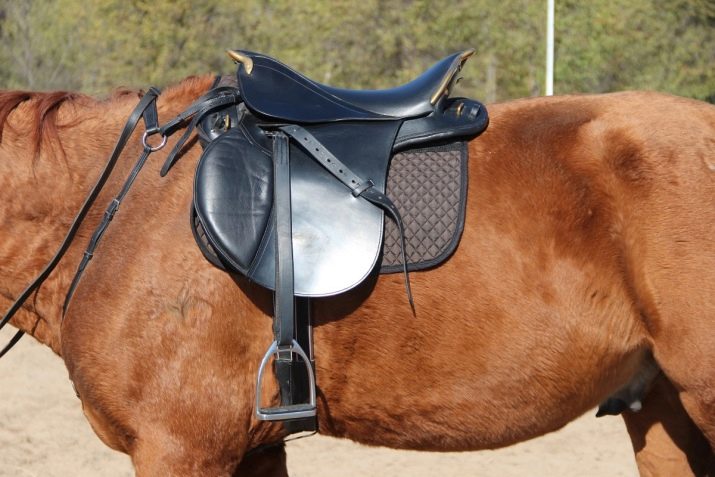
A saddle is considered an important part of a horse harness. Regardless of the type, there are general principles for the design of this riding device.
It distinguishes the following parts:
- bows (front and back);
- the seat itself;
- base (lenchik);
- wings (fender);
- stirrups;
- Schneller
- girth;
- pillow;
- sweatshirt (waltrap);
- fixation belts (putlisch, martingale, strig);
- subscript.
The base (lenochka) is made of dense material and is a kind of frame to which the rest of the saddle is attached. As a raw material for it can be flexible plastic or durable wood. Bows call the raised edges of the saddle, or rather, their bends. The wing performs a protective role, protecting the rider's legs from rubbing against the belts.

Also, various decorative elements are often performed on this part.
Stirrups are metal loops that support the feet, and with their help the rider can sit in the saddle. Belts are used to fix the saddle or its parts to the body of the animal. Some of them prevent the harness from slipping, while others restrict certain horse movements (for example, raising the head). The potnik is a special lining (fabric or litter), which is placed under the saddle to protect the horse's skin.
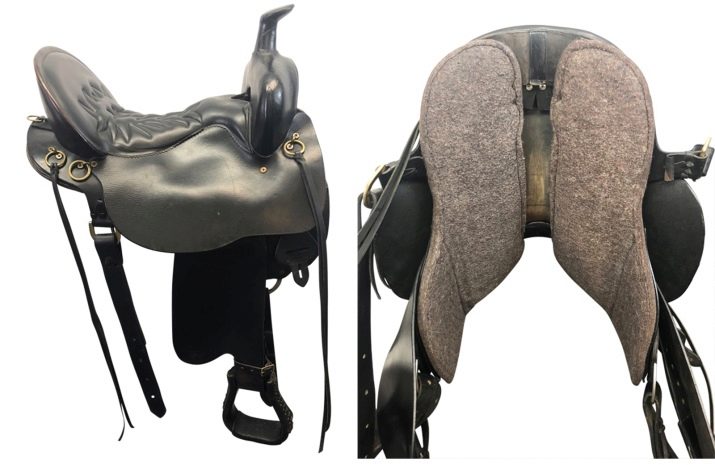
Varieties
Horses are different, like riders, so there are a large number of harness options. There are several main groups of saddles. These are military, highly specialized, and sports types of products.
- Hunting saddle. This view allows the rider to keep his back straight and to feel his horse perfectly under him. It has no contact points with the withers, therefore it causes less inconvenience to the animal. The weight of such a saddle is on average about 10 kg.
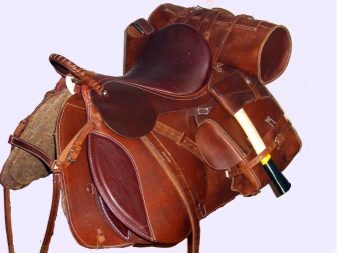

- Universal walking saddle. Suitable for comfortable relaxing trips, combining the features of saddles for jumping and riding. And also it has a relatively low weight - about 5 kg. In appearance it is a classic design. This type of saddle is perfect for beginner riders.
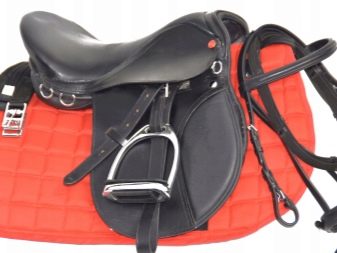
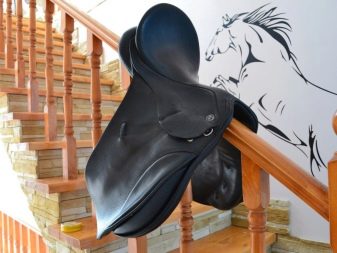
- The military includes: Cossack, cavalry and officer saddles.


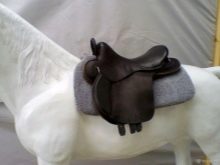
Cossack is designed in such a way that allows the rider to stand up during the battle. For this, additional elements are used. This is a pillow, wings, lenchok or archa. And also in this type the presence of a handle or handle is provided. They serve for the rider to hold on to them. But they may be absent.
The cavalry was designed so that a person could spend a long time riding a horse on a trip. The frame is made of durable materials (e.g. wood or steel). This basis allows you to extend the life of the product, to properly distribute the load on the back of the horse. An added benefit is the presence of special mounts, previously intended for weapons.
Officer or Warsaw construction is now most often used during parades, in mounted police, during long crossings, runs, field exercises.
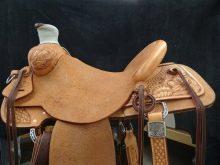


It is equipped additional clamps for weapons and other things. The design itself allows you to evenly distribute the load. It has an average weight (10-12 kg).
The Mongolian saddle has its own characteristics. For example, in its manufacture the gender of the rider, his age, position in society and the purpose of the product (everyday or holiday) are taken into account. Another detail is the presence of a variety of jewelry. It can be patterns, inserts of expensive metals, various color selections.
In addition, there are structural features. The front bow is slightly higher than the back. Stirrups are made large and round. Putischi are usually short and woven, while their buckle does not hide under the saddle, but is directed down to the stirrups. The product itself is usually placed on top of a felt or piece of another dense fabric, after which it is fixed with two straps (cinch).
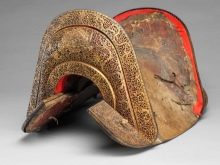
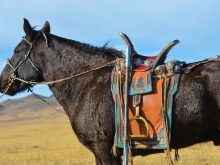
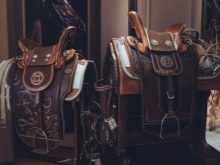
There are various technologies that are used in the manufacture of Mongolian saddles.
So, for example, mosaic bone paintings or filigree enamels, the use of expensive metals along with iron and alloys. And also special groups of national symbols for decoration were highlighted - “Welfare”, “Development above and above” and so on.
Ladies' (female) saddle was proposed and constructed in the Middle Ages - in the XIV century. This is due to the fact that the outfits of women of that time did not allow to make active movements on a horse, and simply did not fit in an ordinary men's saddle. In addition, the male version of the product for the lady was considered inappropriate and even indecent.Therefore, an elegant female saddle was proposed, it also involved a special fit. One leg was placed in a stirrup, and the other was left on the saddle bow.
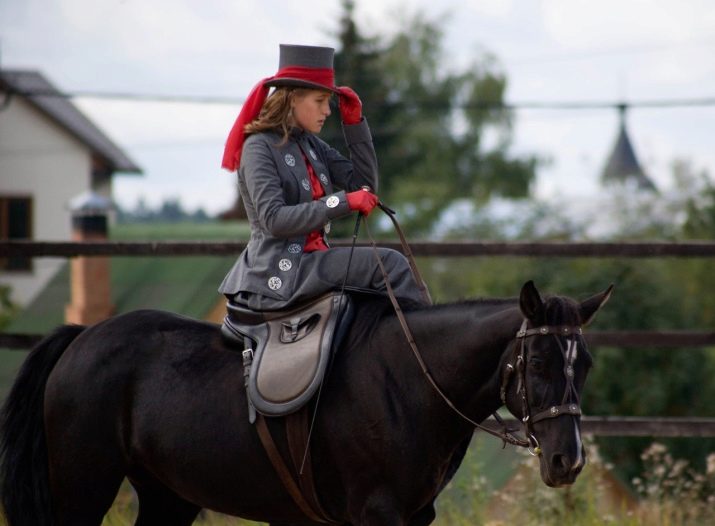
Gradually, women's clothing underwent changes, until the appearance of pants and trousers. This allowed the use of a male saddle. Therefore, in the XX century, the female design was practically no longer used. However, in our time it again "came out." They are used at shows and competitions.
The Circassian (Kabardian) saddle belongs to the light type. The main points is that it is quite high and does not lie on the back of the animal. The design rests on the horse only with saddle shelves parallel to each other. This allows you to reduce trauma to the animal.
The front bow - narrow and high - has a rounded upper end and is located at right angles to the saddle itself. The broad back bow bends back and is also rounded. Such a saddle can be considered military, since the Circassians used them in their military operations.
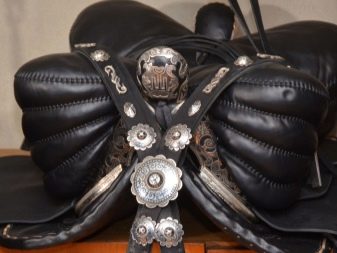
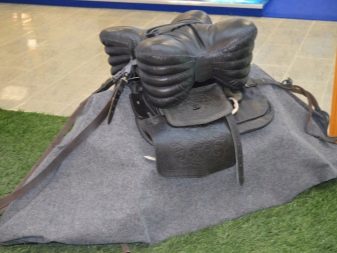
Such a design made it possible to freely turn in the saddle and relatively convenient to shoot.
The Circassian design is equipped with narrow stirrups, into which only the toe of the foot is inserted. They look like cups in shape, and on the back could be accompanied by pieces of mirrors. A special pillow made of reindeer wool was placed on top of the main saddle or archac.
Double saddle refers to special types.
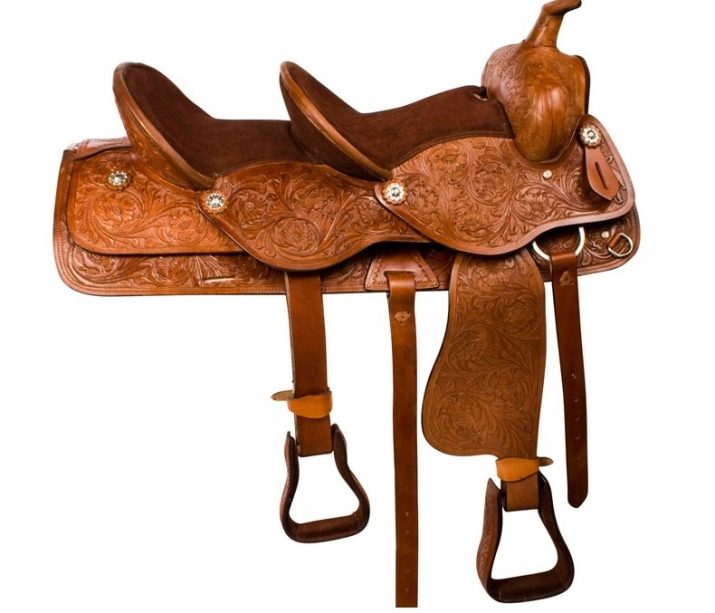
Selection recommendations
Before buying a horse or riding it, you need to choose it correctly. A horse breeder who knows his animals well will do better. He can advise a young horse. However, for beginners on horseback riding it is better to pick an individual in the prime of life, that is, at the age of 8-10 years. Such a horse will know the team, calmly walk in a harness and, possibly, even help the new owner.
Of course, first of all, it should be a strong and healthy animal with a sufficient supply of strength and endurance. Wise horse breeders recommend local breeds to beginners.
And also the horse should suit the owner in behavior and character. This is another plus in the direction of choosing a mature individual, since it is not always easy to cope with a young one.

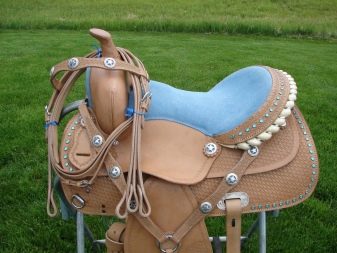
An important factor is the appropriate size of the horse. He must calmly support the weight of the rider. And it’s convenient for a person to sit on it.
The horse's back should not bend unnecessarily. This means that the weight of the rider is too large for her. And the animal will not be able to ride for a long time. In addition, excessive severity can lead to animal spinal curvature and disease.
The horse should be in good physical shape - reasonably well-fed, the hind legs should be located under the back of the body, but not bulge back.
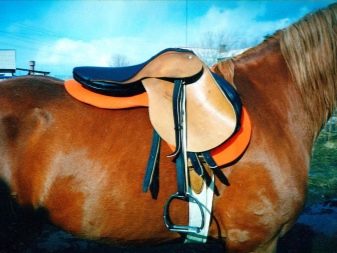
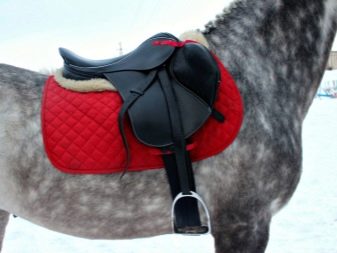
How to saddle a horse?
It is necessary to put on a harness on an animal after the horse is accustomed to its owner and has successfully completed training for basic teams. After that, you can train your horse to harness. There is a certain sequence of actions in order to saddle a horse.
First thing you need check the condition of the animal itself, the skin of the back. To do this, hold the palm on the back with stroking movements. This will help calm the horse, brush away specks or crumbs. Check the bracket and the position in which the saddle is on it. If all is well, you can proceed to the next steps.
Then lay the wrap - this is a felt litter. Although any other soft tissue may be used. Some horse breeders recommend using gel and fur pads (or fur coats). This prevents the horse's skin from rubbing.

Then the rider becomes to the right of the mare and sets the saddle, starting from top to bottom and gently lowering it. At the required level, girths are lowered. Gradually and accurately tighten the belts, fixing from the first hole. Having reached the desired degree of tension, the girths are fixed.
Then check the tension and the correct location of the belts. If necessary, straighten them. Lockers are lowered further, thereby protecting the wing.
If all actions are performed correctly, then the horse was saddled successfully. You can go.

Selection recommendations
Before riding a horse, you need to check whether it is saddled correctly, how the harness is held, to assess the degree of belt tension. If they are free, then the saddle can slip. This leads to the fact that the back of the animal will be rubbed and injured. And also the rider himself may suffer. Initial trips should be done over short distances and at a calm pace. This will help to get used to each other.
At the end of each trip, you need to check the condition of the horse’s back after removing the harness.
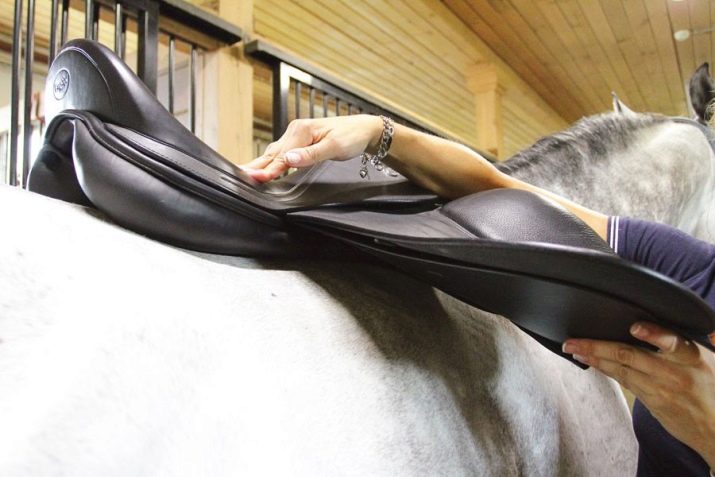
To properly sit in the saddle, you need to perform a certain algorithm.
- The rider stands on the side of the horse’s left shoulder. At the same time, he holds the reins as if he was going to lead her on occasion.
- Then he turns to the right. At the same time throws and distributes the reins - straightens and pulls them.
- The left hand is placed on the neck, capturing the harness and strand of mane. With their right hand they take a stirrup, then turn it to themselves with their outer side.
- The left leg is placed in the stirrup, with the right hand hold on to the back bow. Then, pushing with his right foot and pulling himself up in his arms, the rider should lean on his left foot. At the same time, he straightens and stretches on the stapes.
- The right hand needs to be moved to the front bow. At the same time, the right leg is thrown over the horse. At the same time, the rider’s hull is turning. Then he falls into the saddle.
- The right leg should be placed in the stirrup. Lean on both feet. Then take the right pose for the trip.
Communication with animals requires certain skills and desires. A horse is a beautiful and noble animal that can serve both for travel and for hard work. It is important to look after and take care of your friend.
See how to saddle a horse.










